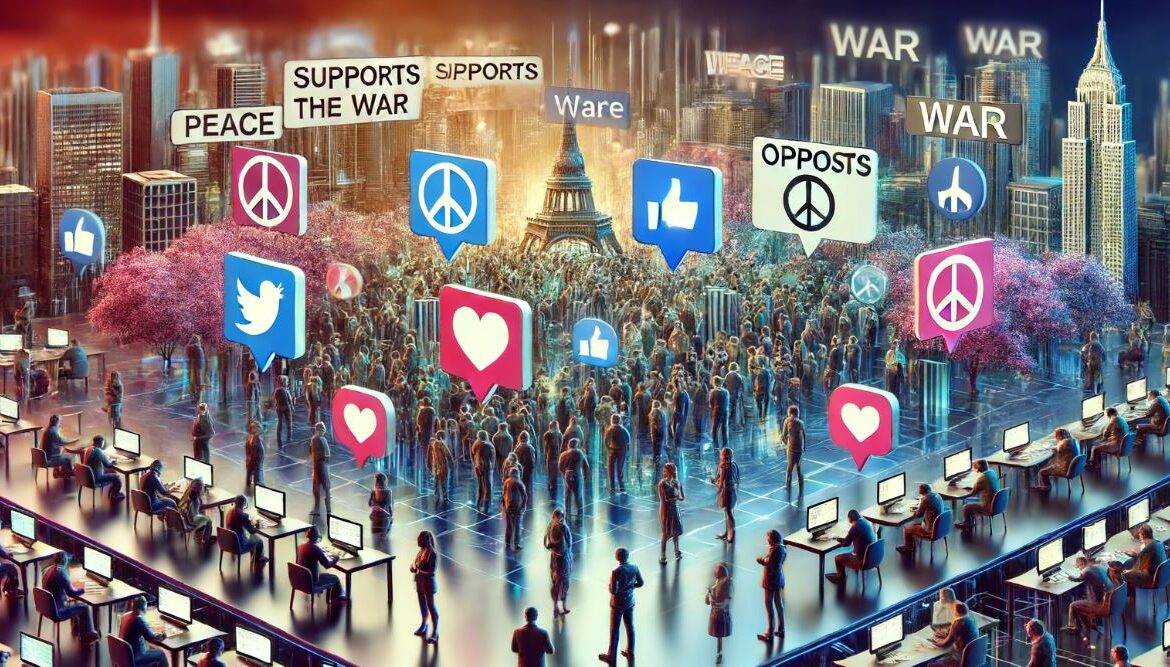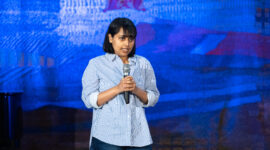Wars are increasingly taking place not only on battlefields, but also online. Jaana Davidjants, at Tallinn University’s School of Humanities, studied narratives around wars and conflicts on social media in her PhD thesis.
On social media, various parties share their narratives, including civilians, soldiers, trolls and propaganda networks. In her PhD thesis, Jaana Davidjants investigated social media-based storytelling with a focus on the wars and conflicts that have taken place in the Middle East and the Caucasus from the turn of the 20th century to the present, including the Armenian Genocide in the Ottoman Empire, the Syrian Civil War and the Second Nagorno-Karabakh War.
For a more in-depth understanding, Davidjants interviewed activists and civilians who produce war-related content to learn how they perceive their activities and what motivates them to create content. She also studied audience reception and examined how people responded to the material on social media. Along with that, it is also important to study social media platforms (Twitter and Instagram) in order to understand how they shape narratives of war and conflict.
The case studies in the thesis revealed that a large number of people are involved in web-based narration and the public actively shapes the meaning of conflicts in comment sections. This means that both intended and unintended audiences participate in storytelling, with the unintended audience occasionally hijacking the content, such as through comments (a common tactic is to leave poop and middle finger emojis in the comments) or hashtags.
As is customary in war narratives, emotionally charged images play an important role. Strategies range from using negatively to positively charged images, or sometimes both. As Instagram is mostly devoid of the possibility to add sources, the affectivity of the stories was reinforced there. Analysis showed that in comparison to Twitter, Instagram is seeing an increase in highly aestheticised war activism, characterised by pastel tones – a visual style previously less associated with war-related materials.

The interactive nature of social media, which allows one to challenge the other side, also contributes to the fact that the narration is never final. This is especially true given that content creators’ target audience rarely includes the opposing viewpoint. Narratives about war and conflict are plentiful today, but the narration itself is becoming increasingly fragmented, as it moves between the past (via historical metanarratives) and the future (via forward-looking activism) while remaining firmly in the present, via encouraging people to act ‘now’. This fragmentation is exacerbated by algorithmically generated content streams on social media platforms, as well as the fact that not all platforms support adding sources.
In all three case studies, commentators challenged the call to action in the original material. This demonstrates that even when content creators reach their intended audience with their messages, it does not always result in an acknowledgement of suffering. Today’s media environment is characterized by a lack of trust, to which the democratization of media has contributed to by vastly increasing the number of narratives available. This affects all participants in conflict-related storytelling. It has an impact on the work of journalists and humanitarian organisations, but the most serious consequences are for those at the heart of the conflict who are attempting to show the reality of their suffering to an increasingly sceptical public.
Jaana Davidjants from the School of Humanities defender her PhD dissertation „Participatory Social Media-Based Multimodal Storytelling of War and Conflict“ on 8 April.
This article was originally published on the webpage of Tallinn University.
If the strategies and stories of war captivate your mind and the history of battles fuels your intrigue, march over to our webpage for more gripping insights about how NATO DIANA is investing close to one million euros in startups developing dual-use technologies in Estonia!
 Back
Back



